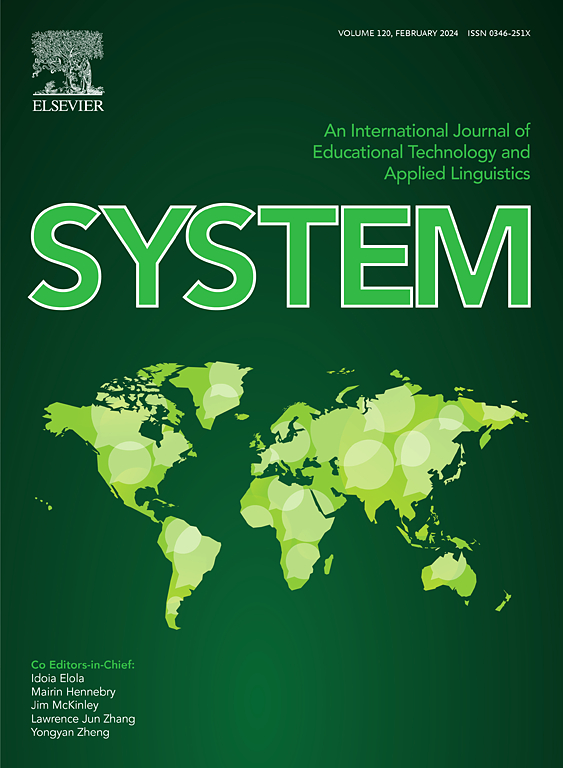Investigating university students’ intention and application of generative AI tools in L1 and L2 writing across formality: A mixed-method study
IF 5.6
1区 文学
Q1 EDUCATION & EDUCATIONAL RESEARCH
引用次数: 0
Abstract
The emergence of generative AI (GAI) tools functionally capable of automatic text generation has brought significant benefits in enhancing writing processes and content quality. While research on GAI tools has recently proliferated in L2 writing, little is known about learners’ intention and application of these tools in naturalistic writing conditions and the features of GAI-assisted L1 and L2 writing across formal and informal contexts. To address the gaps, the study integrated the technology acceptance model (TAM) with the theory of planned behavior (TPB) in a mixed-method design. The data were collected from the questionnaire survey involving 784 Chinese university students and semi-structured interviews with ten of them. The findings indicated the significant influences of perceived ease of use, perceived usefulness, subjective norms, and self-efficacy on their intention to use and actual use, and the emergence of three key themes pertinent to student distinctive GAI perceptions across formality and languages, student subjectivity with product- and learning-orientation of GAI use, and strategic human-GAI interactions transferable to different contexts. This study contributes to empirical evidence on GAI-assisted L1 and L2 writing among tertiary students, shedding light on GAI implications across written languages, formality levels, and educational settings.
调查大学生在跨形式的L1和L2写作中使用生成式AI工具的意图和应用:一项混合方法研究
生成式人工智能(GAI)工具的出现能够自动生成文本,在提高写作过程和内容质量方面带来了显著的好处。虽然最近对第二语言写作中GAI工具的研究激增,但对于学习者在自然写作条件下使用这些工具的意图和应用,以及在正式和非正式语境下GAI辅助L1和L2写作的特征,我们知之甚少。为了解决这些差距,本研究将技术接受模型(TAM)与计划行为理论(TPB)结合在混合方法设计中。数据来源于对784名中国大学生的问卷调查和对其中10名大学生的半结构化访谈。研究结果表明,感知易用性、感知有用性、主观规范和自我效能感对学生的使用意图和实际使用有显著影响,并出现了三个关键主题,这些主题与学生在形式和语言方面的独特GAI感知、学生在GAI使用中以产品和学习为导向的主体性、以及可转移到不同情境的策略性人类-GAI互动有关。本研究为高等教育学生的母语和第二语言写作提供了经验证据,揭示了GAI对书面语言、正式程度和教育环境的影响。
本文章由计算机程序翻译,如有差异,请以英文原文为准。
求助全文
约1分钟内获得全文
求助全文
来源期刊

System
Multiple-
CiteScore
8.80
自引率
8.30%
发文量
202
审稿时长
64 days
期刊介绍:
This international journal is devoted to the applications of educational technology and applied linguistics to problems of foreign language teaching and learning. Attention is paid to all languages and to problems associated with the study and teaching of English as a second or foreign language. The journal serves as a vehicle of expression for colleagues in developing countries. System prefers its contributors to provide articles which have a sound theoretical base with a visible practical application which can be generalized. The review section may take up works of a more theoretical nature to broaden the background.
 求助内容:
求助内容: 应助结果提醒方式:
应助结果提醒方式:


